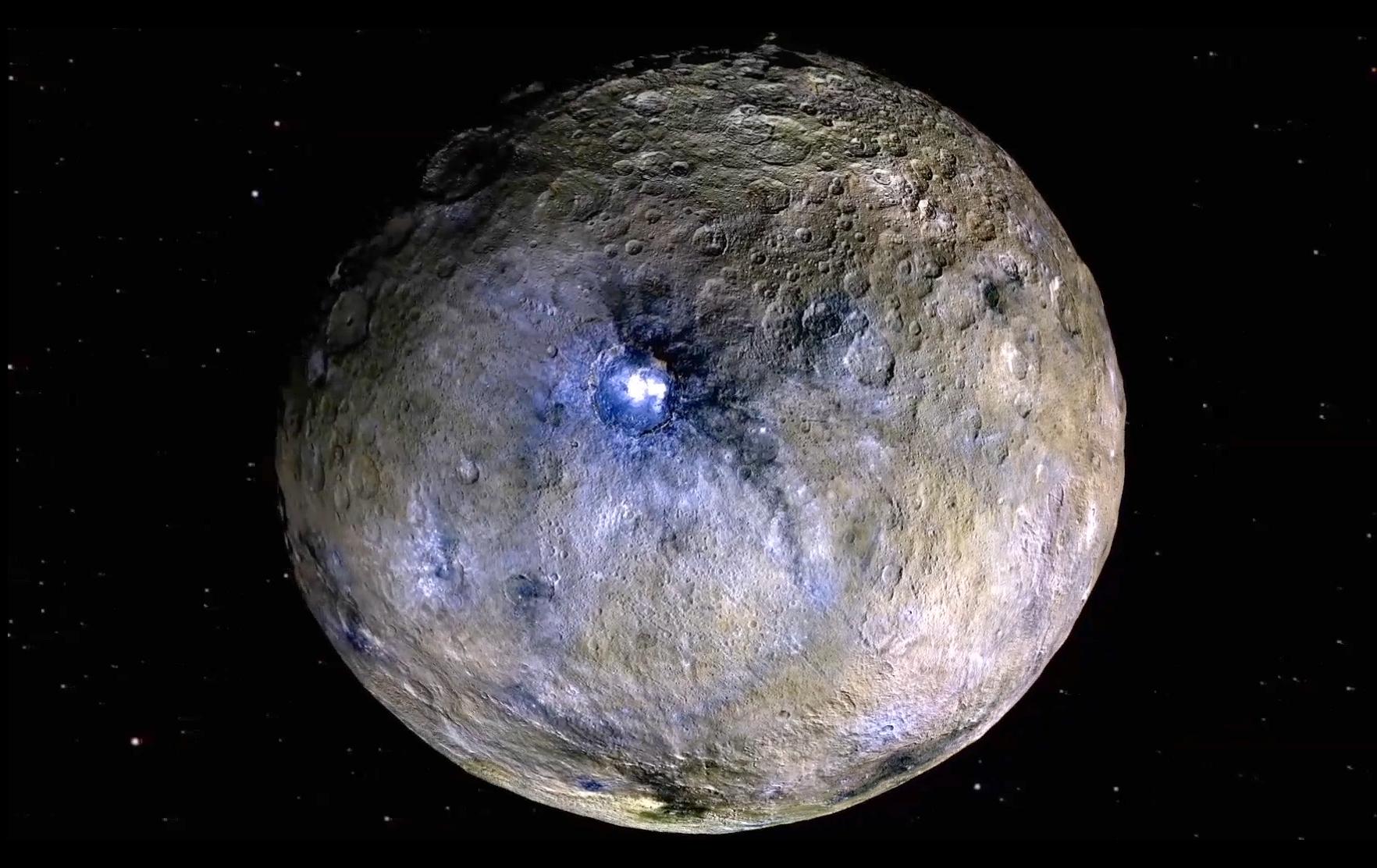When NASA’s Dawn mission arrived at Ceres in 2015, scientists and the general public got their first detailed look at this strange and beautiful planetoid. As the largest object in the Main Asteroid Belt, accounting for more than 39% of its total mass, Ceres is the only object in the Belt that has undergone hydrostatic equilibrium (aka. became round under the influence of its own gravity). The data Dawn obtained between 2015 and 2018, when the mission ran out of fuel, revealed some very interesting things about this mysterious, icy planetoid.
Like Jupiter’s moon Europa, and Saturn’s moons Titan and Enceladus, scientists have speculated that Ceres could be an “Ocean World,” meaning that it could have a liquid water interior that could support life. Dawn’s findings indicated that the planetoid is too cold in its interior to prevent water from freezing, and any liquid it contains is likely to be concentrated brines. But according to new research by NASA scientists, Ceres may have had the right conditions to support single-celled lifeforms about 2.5 to 4 billion years ago.
The study was led by Samuel W. Courville, a Planetary and Earth Scientist from the School of Earth and Space Exploration (SESE) at Arizona State University (ASU), who conducted it while interning at NASA’s Jet Propulsion Laboratory (JPL). He was joined by multiple researchers from SESE and JPL, the School of Molecular Sciences at ASU, and the Department of Genome Sciences at the University of Washington. The paper summarizing their findings was published on August 20th in Science Advances.
This illustration depicts the interior of dwarf planet Ceres, including the transfer of water and gases from the rocky core to a reservoir of salty water. Credit: NASA/JPL-Caltech
According to Dawn’s data, scientists concluded Ceres has insufficient heat in its core from the decay of radioactive elements to maintain an interior ocean. Unlike Europa, Enceladus, and other “Ocean Worlds,” it does not have the benefit of tidal heating caused by the gravitational influence of a massive planet. Data obtained by the Dawn mission previously suggested that the bright, reflective patches on Ceres’ surface were largely composed of salts left over from liquid water that percolated up from a massive reservoir beneath the surface. Other research found evidence of organic carbon-bearing molecules on its surface.
For their study, the authors created thermal and chemical models that mimic the temperature and composition of Ceres’ interior over time. They found that 2.5 to 4 billion years ago (roughly 500 million to 2 billion years after it formed), Ceres’ subsurface region may have had a steady hot water supply. This water was heated by the decay of radioactive elements in Cere’s rocky, metallic core when the planetoid was still young. Their analysis also showed that this water contained dissolved gases bubbling up from metamorphosed rocks at the core-mantle boundary.
These results indicate that Ceres had the third and final element needed for life in the past, and they have implications for other water-rich objects in the Solar System. Many planetoids comparable in size to Ceres (~940 km; 585 mi) also don’t have sufficient internal heating mechanisms caused by radioactive decay or the gravitational influence of giant planets. These findings essentially state that while these bodies may not be habitable today, they may have been in the past. Said Courville in a NASA press release:
On Earth, when hot water from deep underground mixes with the ocean, the result is often a buffet for microbes — a feast of chemical energy. So it could have big implications if we could determine whether Ceres’ ocean had an influx of hydrothermal fluid in the past.
Further Reading: NASA JPL, Science Advances
